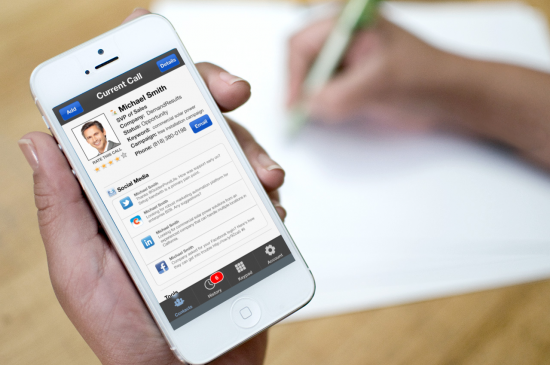With most being tethered to CRM, the mobile execution of your CRM solution can have one of the biggest positive or negative impacts on your organization.
 Image by ringdna
Image by ringdna
Harking back to the days when most CRM implementations were flailing, we’re now seeing a similar number of challenges with mobile deployments of CRM. Many of these problems originate from both the approach you take and a lack of understanding of what you’re trying to solve for with mobile platforms.
As practitioners, we often get involved in what we call rescue jobs, or asked to do forensics on failed or failing projects. The most common problem areas we see (in no particular order) are design, usability, and what we like to call the lack of responsive data flow. The first two are fairly easy to describe; in terms of the last issue, we now need to be able to predict and serve data in a way that speeds up decision making or transactions. If the design and usability are broken, then intelligent data flow is literally impossible.
Now that CRM has been commonplace for nearly two decades, and mobile for half that, why are there so many difficulties in crafting a well-thought-out mobile CRM experience? We most often find that firms are making bad assumptions, expecting unrealistic results from the mobile CRM interface, or creating a “FrankenCRM” based on how mobile CRM has been adopted organizationally.
The first and most immediate impact any technology has on employees is that they will assess the value of the organization by the tools it provides. There’s no such thing as a valuable CRM solution without adoption. Providing systems that give employees access anytime, anywhere to perform (or outperform) their job description can help drive a culture that breeds adoption and not apathy. But the most significant drawback to any firm when mobile CRM is not wielded as a competitive advantage is that it becomes a drag on your most expensive asset: your labor.
You should ask yourself, then, not only why you should care about a mobile strategy but also how do you get a meaningful result with your mobile CRM efforts. Among the most important elements for success will be a clearly defined mobile technology policy firm-wide: simply put, who’s paying for the devices, and what are the expectations for their usage.
Then you need to create a blueprint for mobile CRM just as you would the core desktop product (see my March CRM Next Step). And finally, there have to be clearly defined internal expectations for CRM and a vetting process for enabling or modifying mobile in the future. If usage is easy and provides high value, the rest is also easy—but it means you’ll need to police what goes into your mobile platform.
With the summer in full swing, we are getting ready for my favorite time of year. This is when good companies try to take stock of how they’re doing and make changes to hit their goals. More importantly, many of those companies will be attending CRM Evolution in August, trying to refine their CRM approach or to learn as much as they can.
This year I have chosen to focus on teaching many of the tricks we have learned in developing mobile CRM, talking about the trends we’re seeing in the industry and how they are helping companies execute, and also walking through the process of how to set expectations internally and drive a consistent mobile CRM methodology.
The good news is that whatever action you take as it relates to mobile CRM can have exponential effects on productivity, drive adoption with even the most challenged users, and help to establish the right customer focus—which we all want, to support, sell to, and service the people who pay our paychecks. I hope to see you there.
(Source: Destinationcrm)